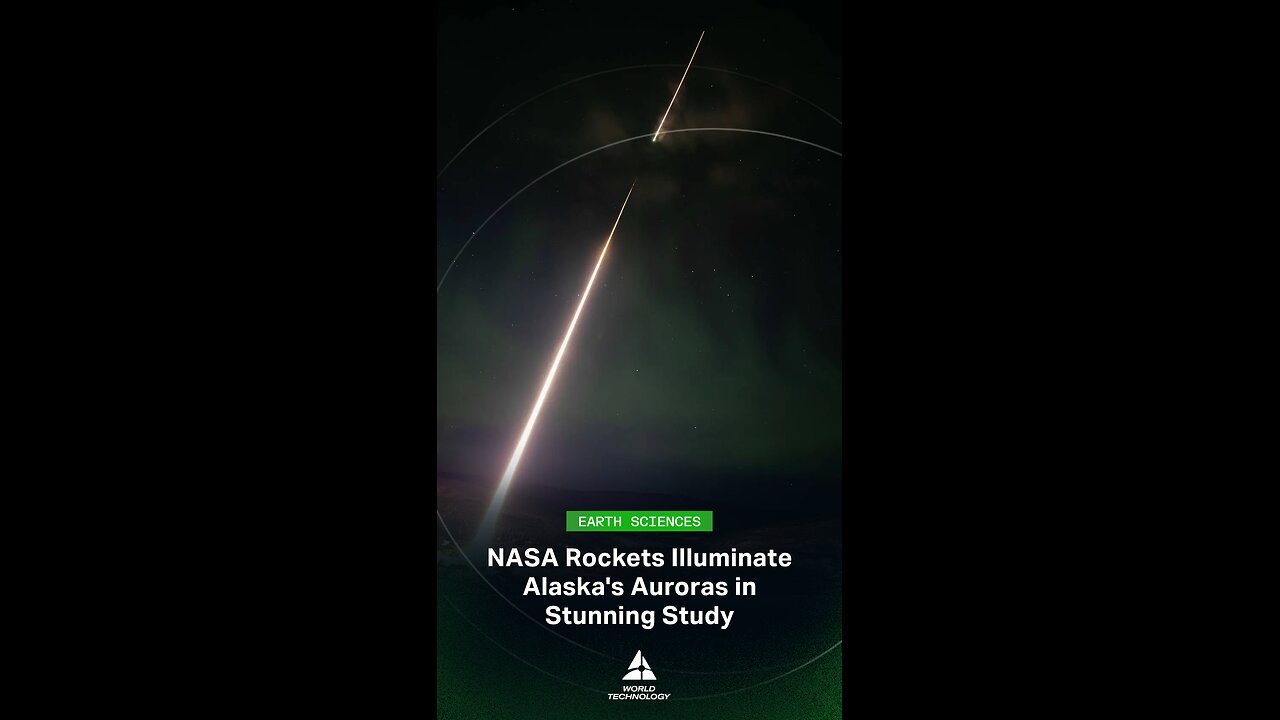Premium Only Content

NASA Fired Rockets Into the Night Sky – Here’s Why
Above Alaska’s skies, science met spectacle. In a mission led by researchers including Mark Conde of the University of Alaska Fairbanks, NASA launched rockets directly into auroras to study the storms behind the light. The dual-tracer experiment released vapor trails into auroral displays — like adding dye to flowing water — to track and understand how solar particles interact with Earth’s upper atmosphere.
This isn’t just a light show. It’s part of a broader effort to improve space weather forecasting, helping protect essential systems like GPS and communications from the effects of geomagnetic storms. By turning the night sky into a laboratory, scientists are unlocking powerful data that could reshape how we monitor the solar system around us.
___________________________________
About World Technology:
Welcome to World Technology – where science meets competition! We bring together brilliant minds and innovative thinkers from all around the globe to compete, collaborate, and celebrate advancements in Life Sciences, Earth Sciences, Industrial Sciences, and Data Sciences.
👉 Visit us: www.worldtechnology.games
👉 Our socials on Linktree: : linktr.ee/worldtechnologygames
___________________________________
#shorts #aurora #northernlights #spaceweather #NASA #scienceinspace #auroralresearch #MarkConde #UniversityOfAlaskaFairbanks #rocketscience #vaportracers #celebratehumaningenuity #WorldTechnology #geomagneticstorm #upperatmosphere #spaceexploration #aurorastudy #spaceresearch #atmosphericphysics #skylab #sciencevideo #AlaskaScience #NASAresearch #GPSprotection #communicationtech
-
 1:57:56
1:57:56
MG Show
17 hours agoTrump and Mamdani's Surprisingly Cordial Meeting; Trump Posts Q Memes
6.12K12 -
 1:10:51
1:10:51
MetatronGaming
1 day agoBroken Lore Don't Watch Full Game
34.9K1 -
 2:37:56
2:37:56
Side Scrollers Podcast
14 hours agoAsmongold vs DSP - HAPPENING NOW
9.09K8 -
 8:38
8:38
MattMorseTV
13 hours ago $9.83 earnedThe Operation is NOW UNDERWAY.
12.2K38 -
 1:12:29
1:12:29
PandaSub2000
1 day agoSonic Galactic | GAME ON...ly! (Edited Replay)
3.68K3 -
 19:15
19:15
Nikko Ortiz
1 day agoOstrich Gets A Taste For Human Blood
78.5K19 -
 24:26
24:26
GritsGG
11 hours agoGiga-Big Duo Game w/ Mr. Poff! Most Winning Duo EVER!
4.14K -
 21:54
21:54
The Pascal Show
10 hours ago $1.66 earned$1.5 MILLION HIT?! Candace Owens Drops More Shocking Info On Her France Hit Plot THIS IS INSANE!
6.16K6 -
 LIVE
LIVE
Lofi Girl
3 years agolofi hip hop radio 📚 - beats to relax/study to
186 watching -
 1:29:13
1:29:13
ThisIsDeLaCruz
10 hours ago $3.95 earnedRunning Sound for 1.6 MILLION PEOPLE!!! Madonna In Rio
14.5K2